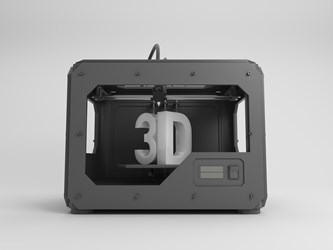3D Printed Rib Cages Help Train Surgeons

By Christine Kern, contributing writer

3D printed models provide lifelike simulations for pediatric practice.
University Feinberg School of Medicine has adopted a new use for 3D printing: creating model ribcages to provide lifeline simulations for training of pediatric surgeons, according to a press release. While most surgical training is carried out in the operating room, pediatric surgery provides some particular challenges because of the miniscule size of their patients.
Dr. Katherine Barsness, associate professor in Surgery and Medical Education at Northwestern, has found a solution for the tricky training of pediatric surgeons, noting, “The overwhelming majority of surgeons just train in the operating room. Everybody has a learning curve when they’re developing new skills, a time when they make mistakes while trying to master a certain technique. Unfortunately, a learning curve places patients at risk.”
This is especially true when the patient in question has a chest the size of an egg.
To overcome this learning curve without increased risk to the patients, Barsness turned to engineers from Feinberg’s Innovation Lab and the McCormick School of Engineering and Applied Sciences. Together, they developed life-sized, reusable models of a newborn’s ribcage that can be used by pediatric surgeons in training to provide an authentic – but simulated – education.
In an interview with WGN TV, Barsness explained, “Simulation-based education is very, very new in medical education overall. So during my training, we didn’t really do anything in the simulation lab. We learned by what’s called the classical Halstedian model, which is see one, do one, teach one.”
As Barsness worked with the simulation lab, using various artificial structures, she was grabbed by the possibilities for neonatal training, saying, “The minute I saw that tiny little rib cage, I immediately thought of neonatal surgery. And I thought how can I possibly use that rib cage, to translate over to what I teach every single day?” She then merged the tiny models with bovine tissue that looks and feels human.
“It’s very real. So the muscle is real muscle, but we also have the constraints of a rib cage, which is created using the 3D printer. So this hybrid model gives you the best of both worlds,” Barsness said.
Barsness believes that models like hers will eventually become the norm for training surgeons, but recognizes that challenges hinder their immediate introduction. “First is dedicated time for education outside the operating room. We need programs to let their trainees leave clinical duties for dedicated simulation-based education,” she said. “Second, there are very few pediatric surgeons in the world who are trained to conduct this type of education.”
And, of course, there is the matter of funding. Though each ribcage can be produced for about $200, the printers themselves are a significant investment, as are the resources to support it. But she said acceptance of the models – proving their value – is the biggest struggle right now.
“That acceptance is predicated on data. So our next step is to show that using the simulation models really does improve physicians’ performances in the operating room,” said Barsness.
